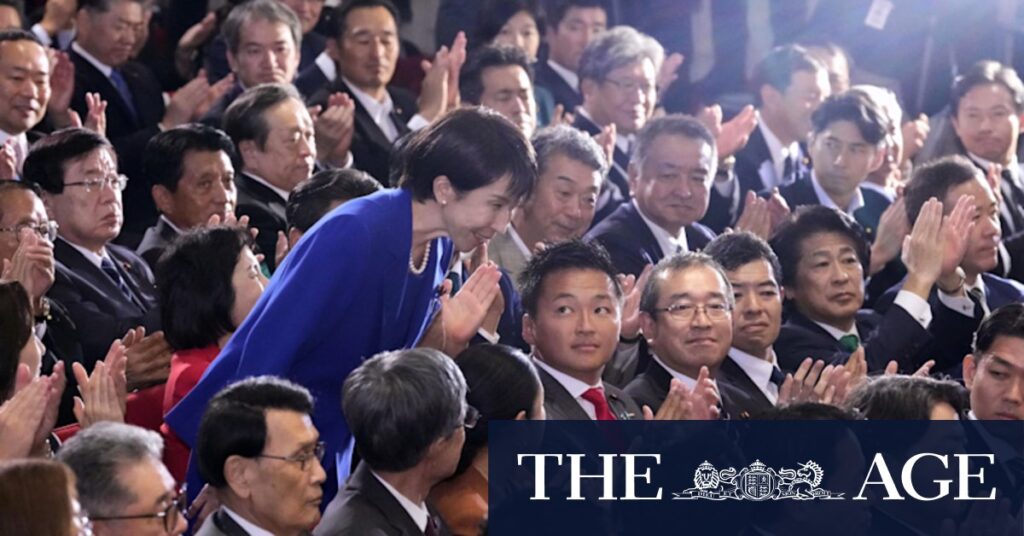
Singapore: Once a pink-haired, heavy metal rocker, Sanae Takaichi is now on the brink of making history as Japan’s first female prime minister. With her political inspiration drawn from Britain’s Margaret Thatcher, Takaichi aims to shift Japan’s ruling Liberal Democratic Party (LDP) further to the right.
“My goal is to become the ‘Iron Lady’,” Takaichi stated during her third attempt to secure the presidency of the LDP. Despite her ambition, she faces criticism from within her party, where some members have dubbed her “Taliban Takaichi” due to her staunch conservative views.
Political Ascent and Challenges
Takaichi, a former economic security minister, emerged victorious in a party leadership ballot, defeating the centrist frontrunner, Shinjiro Koizumi. At 44, Koizumi was vying to become Japan’s youngest leader in over a century. Takaichi’s win comes as she prepares to replace Shigeru Ishiba, who resigned as prime minister following historic election defeats that cost the LDP its majority in both parliamentary houses.
While she is expected to be confirmed as the next prime minister by Japan’s national parliament, the Diet, opposition parties could pose a challenge. However, they remain too divided to present a united front against her candidacy.
Domestic and International Hurdles
Upon assuming office, Takaichi will have to navigate a complex international landscape, including managing relations with the unpredictable Trump administration and a 15% U.S. tariff deal that obligates Japan to invest $550 billion in the American economy.
Domestically, she faces significant challenges, including a stagnant economy, rising prices, and public unease over foreign workers and tourists. Her election signifies a victory for the LDP’s conservative faction, who advocate for a rightward shift to regain public support after losing the upper house election in July.
Public Perception and Gender Politics
Despite her historic win, Takaichi has yet to outline a comprehensive plan for party reform, particularly regarding campaign finance and the slush fund scandal that tarnished the LDP’s reputation in 2023.
“For the public, it looks like business as usual and, for a lot of them, that’s no longer acceptable,” said Jeff Kingston, a political scientist at Tokyo’s Temple University.
Takaichi’s victory is a milestone for Japan’s political system, where women occupy only about 15% of the lower house seats. She has pledged to appoint more female cabinet ministers, but skepticism remains about her commitment to women’s issues. Her opposition to allowing separate surnames for married couples and female succession in the imperial family further fuels this doubt.
Historical Context and Future Prospects
Once a drummer in a metal band, Takaichi entered the Diet in 1993 and rose through the ranks as an ally of Shinzo Abe, Japan’s longest-serving prime minister. She is a strong supporter of “Abenomics” and is known for her nationalistic views, including regular visits to the controversial Yasukuni shrine.
In her victory speech, Takaichi warned her colleagues of the hard work ahead to revitalize the LDP.
“Everyone will be required to work — work like a horse. I will abandon the notion of work-life balance. Work, work, work, work, work,” she declared.
As Takaichi stands on the cusp of becoming Japan’s first female prime minister, her leadership will be closely watched both domestically and internationally. Whether she can truly emulate Thatcher and transform Japan’s political landscape remains to be seen.






